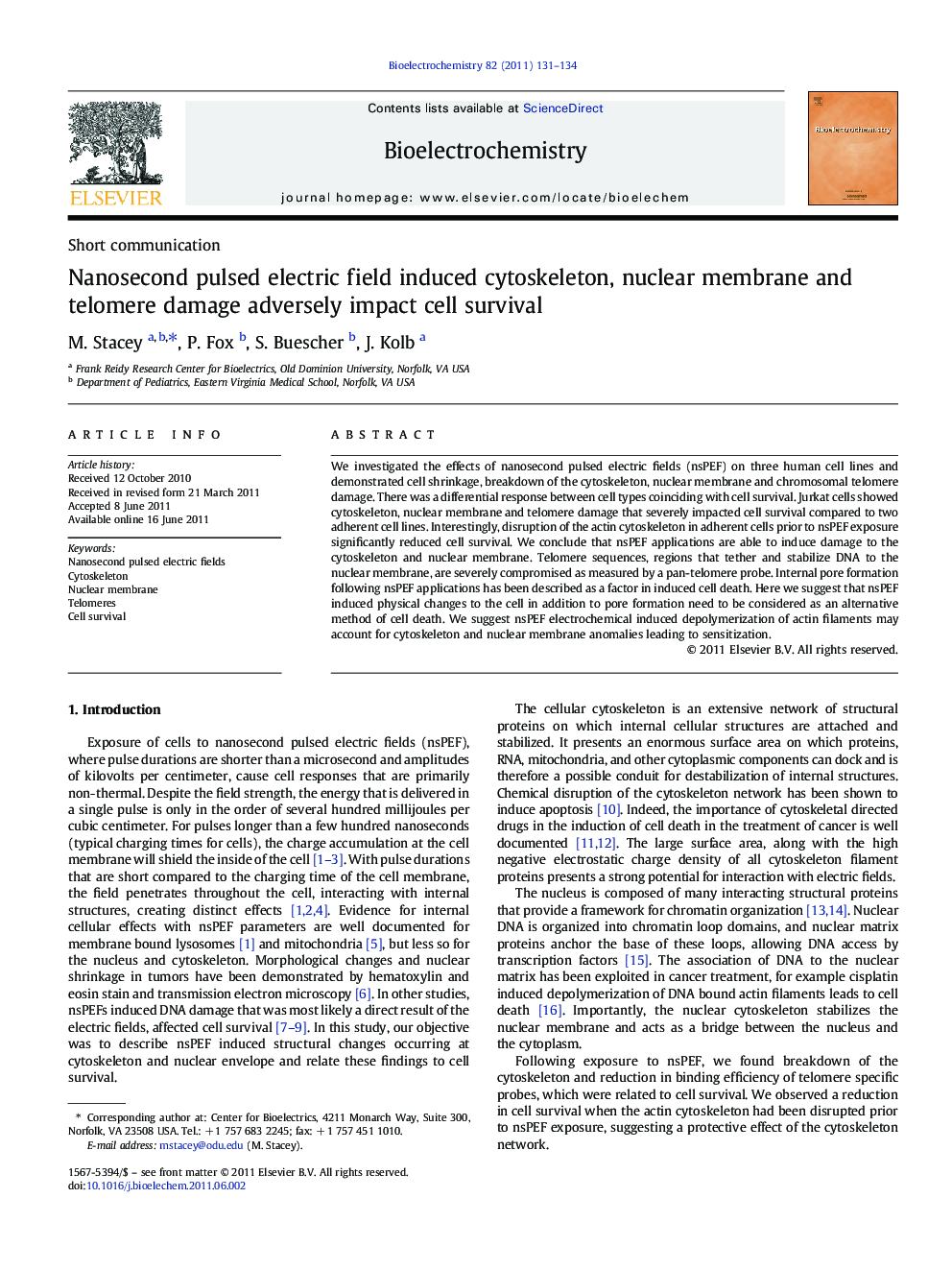| Article ID | Journal | Published Year | Pages | File Type |
|---|---|---|---|---|
| 1268142 | Bioelectrochemistry | 2011 | 4 Pages |
We investigated the effects of nanosecond pulsed electric fields (nsPEF) on three human cell lines and demonstrated cell shrinkage, breakdown of the cytoskeleton, nuclear membrane and chromosomal telomere damage. There was a differential response between cell types coinciding with cell survival. Jurkat cells showed cytoskeleton, nuclear membrane and telomere damage that severely impacted cell survival compared to two adherent cell lines. Interestingly, disruption of the actin cytoskeleton in adherent cells prior to nsPEF exposure significantly reduced cell survival. We conclude that nsPEF applications are able to induce damage to the cytoskeleton and nuclear membrane. Telomere sequences, regions that tether and stabilize DNA to the nuclear membrane, are severely compromised as measured by a pan-telomere probe. Internal pore formation following nsPEF applications has been described as a factor in induced cell death. Here we suggest that nsPEF induced physical changes to the cell in addition to pore formation need to be considered as an alternative method of cell death. We suggest nsPEF electrochemical induced depolymerization of actin filaments may account for cytoskeleton and nuclear membrane anomalies leading to sensitization.
Research highlights► Human cell type specific responses to nsPEFs were observed. ► The cytoskeleton, nuclear membrane and telomeres show pulse induced damage. ► Chromosomal telomeres are sheared away from the main body of the nucleus. ► Disruption of the cytoskeleton prior to nsPEF exposure reduces cell survival.
